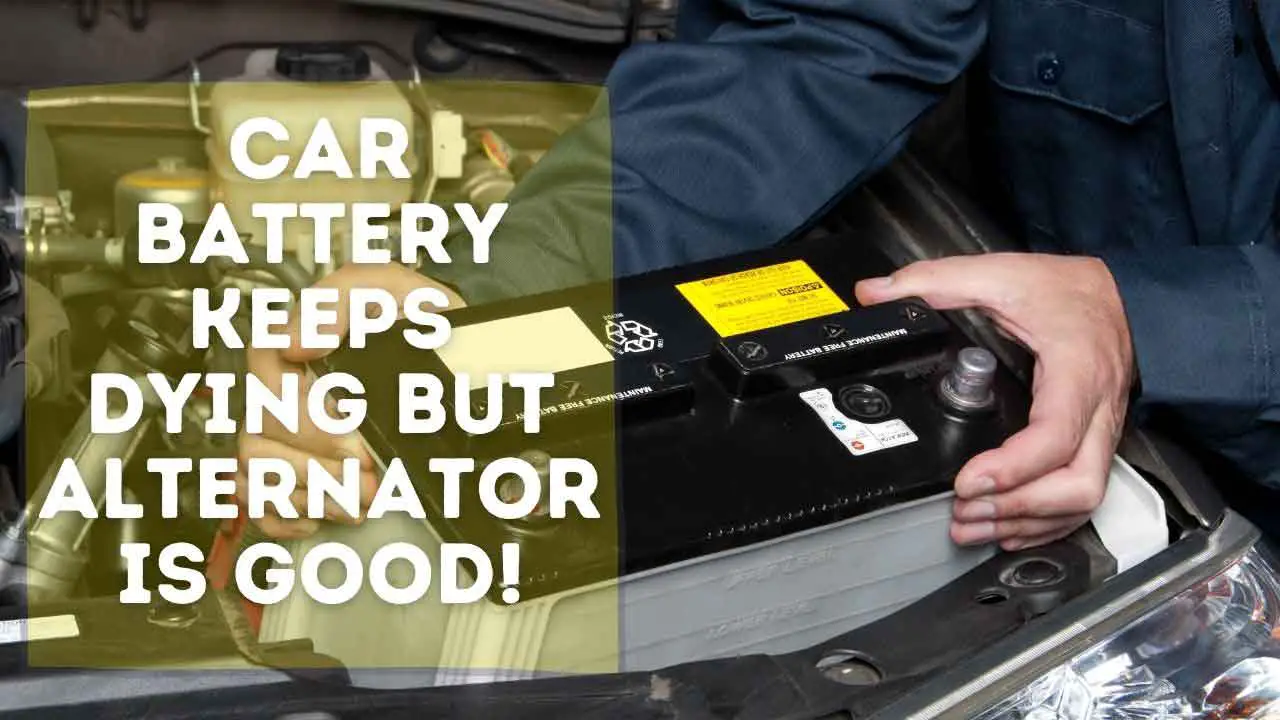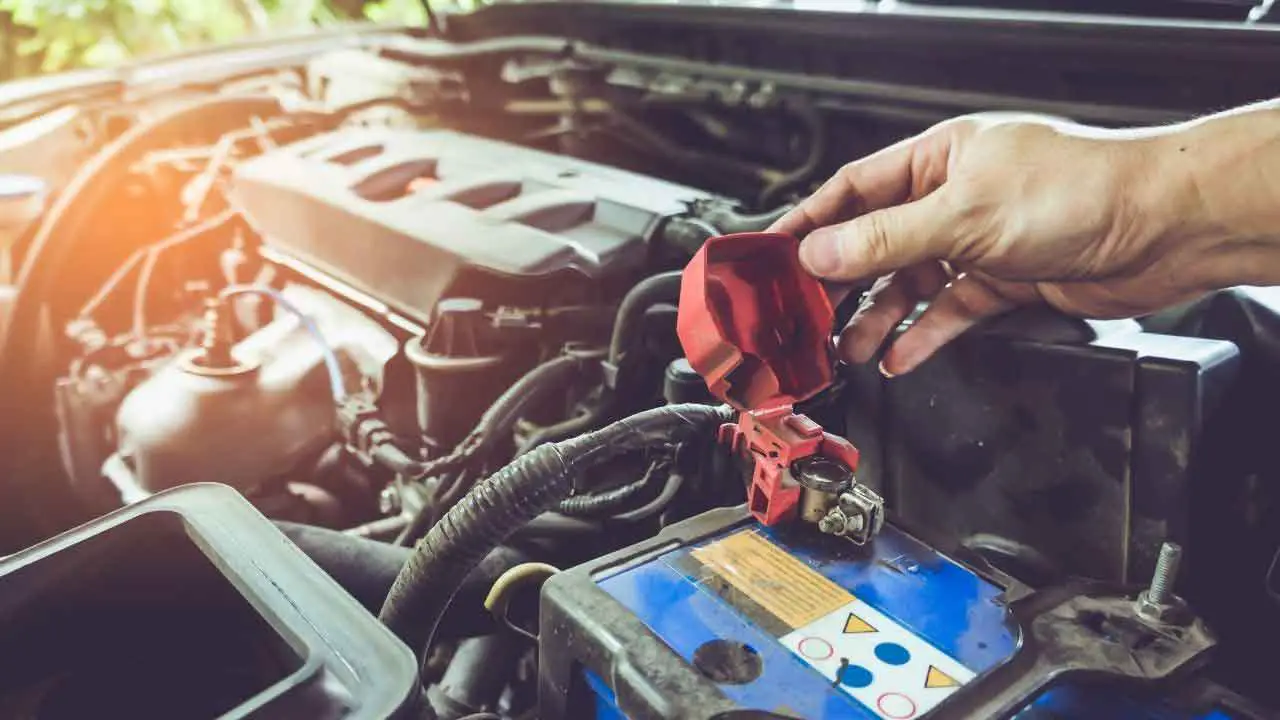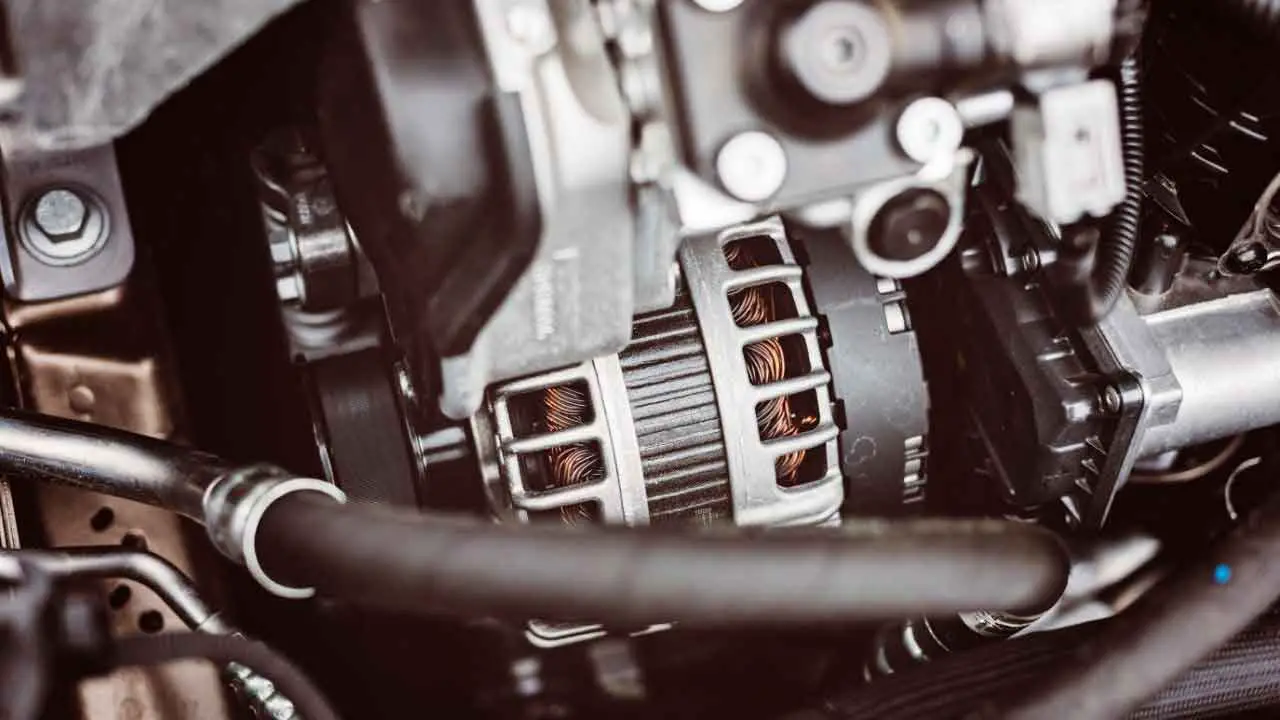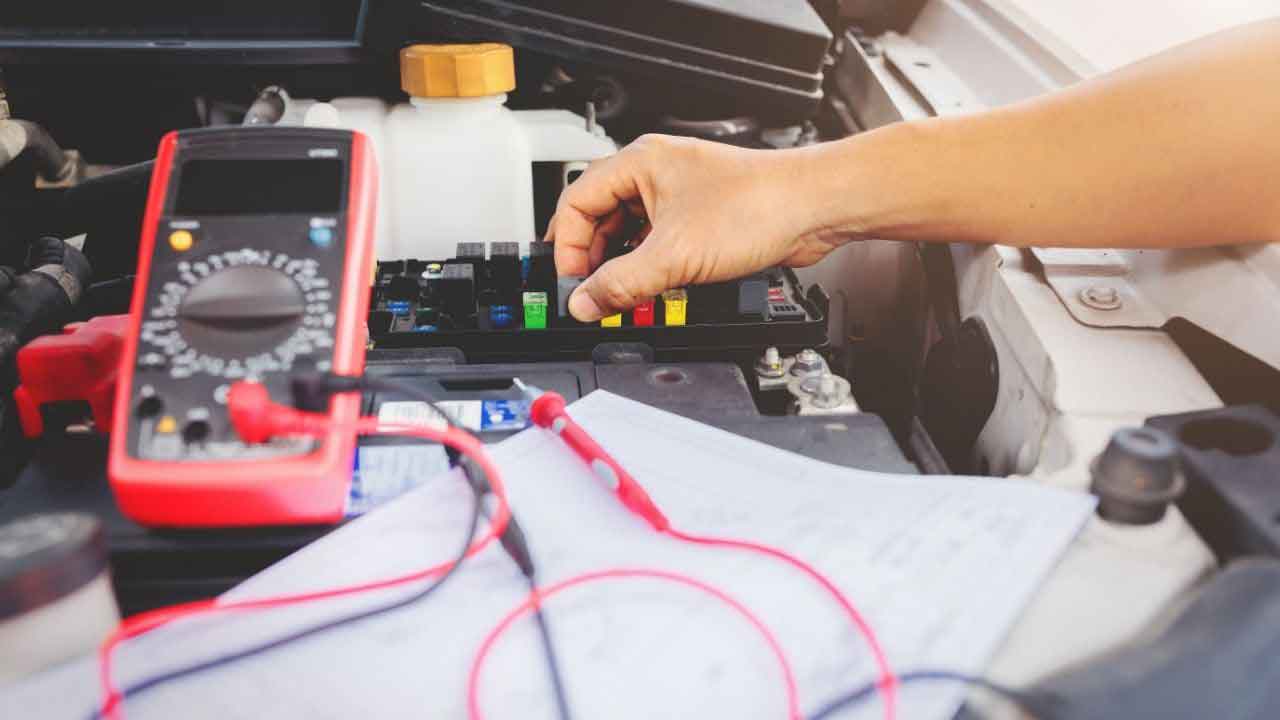The car battery is a box that has two terminals at the top while others have them on the sides and it contains sulfuric acid and lead.

It is one of the most important parts of your vehicle which acts as the heart since the car needs it to drive.
Its purpose is to jump-start the engine and provide electric power to spark plugs to kindle the fuel.
It also provides power for lights and climate control systems. If it is dead, then the car cannot even start or operate and therefore causing many troubles especially when you were not ready for the same.
We shall look at the reasons which drain the car battery and the possible solutions that can get applied to prevent the damage of the batteries. Stay with us!
Why My Car Battery Keeps Dying?
Most people can’t figure out the reason behind the battery getting died while the alternator is functioning properly. Here are the reasons that can cause your battery to die despite having a good alternator installed-
1. Leaving the Headlights On
The lights should not get left on especially when you are parking or when you are just after work and you decide to handle some issues first.
It should be switched off to prevent them from being damaged. You should make sure that the headlights and dim light are off to prevent draining a battery overnight.
When it is dark outside, you can check interior lights to see if they are in good condition. A malfunctioning system can leave the headlights on permanently, therefore, causing some problems.
2. Parasitic Drains in Electrical System
Parasitic drain means some of your electrical components of the vehicle are running background without being triggered. This happens generally because of a failed switch, faulty wiring, or inappropriate connections.
Parasitic drains can easily kill the batteries. Drains may cause the trunk lights to misbehave and be on unnecessarily.
The clock, mirror dash cams, security alarm, car speakers, and radio presets may run throughout. In case there is an electrical problem, some of the components may be left on.
3. The Battery in Weak Condition
Poor maintenance of the battery like drains in the clock or the radio preset may leave it in a condition where it cannot keep power for a long period.
This makes the car battery die and is susceptible to these circumstances and it will not get working well in very hot or cold conditions.
You can make use of the trickle charger which prevents overcharging and charges the battery slowly.

4. Corroded or Loose Battery Connections
Corrosion and loss connections get caused by poor maintenance. It affects the charging system and it may not be from topped off when driving.
Loose battery connections may not function well hence causing problems. In a case where the battery is not charging, then a professional mechanic can look into the problem.
5. Faulty Alternator Diode or Connection
The alternator distributes power to electrical systems and recharges the battery but if it is faulty, the power will get drawn by the circuit even when the engine is not functioning. This may cause harm and it should get rectified to prevent it from causing more damages.
Although you may have a properly functional alternator, the connections between the alternator and the battery can cause problems as well.
6. Old or Weak Battery
The battery may show signs of not jump-starting on especially when it gets worn out.
Car batteries may last from 4 to 5 years depending on how you drive and where you live but when it begins to drain, you will have to look for a quality battery.
In case the battery has served you for many years, it is good to look for a new one.
7. Very hot or cold temperatures
Newer batteries are resistant to extreme temperatures but the performance of the old battery weakens and enlarges the underlying conditions.
The car batteries in cold climates last for 61 months and last for 40 months on average in areas where there are higher temperatures.
When there are high temperatures, it may take 24 hours for the car battery to discharge on its own and may take several days to discharge during cold weather. You should keep monitoring the battery during summer to prevent finding the battery dead.

8. Too Many Short Drives
If you use your car to drive very short distances like 5 to 10 miles, you are slowly consuming the stored battery power.
Car batteries use most of its strength when you start the engine. After discharging a significant amount of its power, it requires some time to recharge through the alternator.
But short distances prevent this regular process. Eventually, your car battery will die more often than it should be.
How to Prevent Car Battery From Dying?
Now that you know the reasons behind battery discharge problems in your car, here are the solutions that you may try to prevent the battery from discharging without giving you any hint-
1. Check the Connections of the Battery
You should regularly check the connections to see if they are clean and tight. Ensure that the terminals and cables are in good condition to prevent corrosion and damage in these parts.
You should also make sure that the battery has a fluid and that there is no leak in the battery because this damages the charging system.
Sometimes, dust, rust, or grease can prevent wires from conducting all the currents from the alternator to the battery. So, keep the connections clean and tight.
2. Find Parasite Drainers
Finding parasitic drainers is a hectic job when you don’t know how to do that.
Since you don’t know which component is consuming your battery power, you can’t just go and switch a component off to make a solution.
Here is the process to eliminate parasitic drain-
For this thing to do, you need a Multimeter with amp capabilities that range from at least 200 milliamps to 20 amps. However, a 10 amps multimeter will do the work as well.
i. Charge the battery with battery charger
First, you need to charge the dead battery with a jump box or a battery charger. After the battery is fully charged, check the voltage of the battery using the multimeter. A properly functional battery should give you 12.6-volt reading. A slight deviation of the battery voltage on either side is also acceptable.
If you see a massive deviation in voltage like 9 or 10 volts, then your battery is weak and it needs to be replaced before going forward to the next step.
ii. Turn off All Things in Your Car
Now, turn everything off of your vehicle. Remove the key from the ignition, unplug any external device, turn off air condition, radio, lights, and any other component that consumes electricity.
Shut off all the doors of your vehicle as the open door gives the vehicle computer system to run some other things in the background.

iii. Configure Multi Meter
After shutting all things, configure the multimeter to get amp reading. You may need to change the position of the leads in the multimeter. Use the user manual to get the proper idea about that.
Turn the knob to the 10 amp option and you are good to go.
iv. Check if There is Parasitic Drain
Remove the black clamp from the battery terminal and connect a cable of your multimeter with that clamp. Connect the other cable of the multimeter with the negative battery terminal.
If you see more than 50 milliamps read out in the meter, then there is something in your car that is drawing power causing battery drain in background.
v. Check By Removing Fuses
As you are now 100% sure that there is something in your car that is drawing electrical energy from your car battery in the background, you should now figure out which is the exact component that is causing the issue.
An easy way to do this is to leave the multimeter as it is, connected with the battery, and start removing fuses one at a time.
Remove a fuse, check if the meter readout goes down or not, put it back in place if the meter readout does not change. Repeat the process until you find a fuse that affects meter readout when removed.
Different vehicles have fuse boxes in different places and some cars have multiple fuse boxes in different locations. So, check your owner’s manual to find out all the fuse boxes.
vi. Solve the Problem
After you find the component that consumes your battery charge, fix that for solving the parasitic drain issue.
A lot of times, a Loose or damaged electrical connection causes parasitic drain problems. So, always check for wiring issues first to save your time and money.
3. Keep the Car Out of Extreme Heat
Excessive heat is unfavorable to the car because it makes the battery fluid to dry up. This damages the internal battery structure.
Ensure that you park your car under the shades to prevent the heat from draining the battery. You can also make sure that the interior cooling system is in good condition when you are getting into the car.
4. Drive Your Car More often for it to recover
A car that is not used in most cases will easily die making some of the parts not function well. It is even better to drive it for long distances. This will make the car function well since the alternator requires to get recharged for more time. You should drive your car regularly for example three to four days for the battery to get recharged.
5. Avoid Plugging in Unnecessary Devices
Avoid plugging in the electrical devices as this drains the battery fast.
Devices like smartphones, DVD players, and navigation systems may drain the battery while you are driving. These devices are very important in our lives but they bring difficulties when they make the car battery running out of power.
However, this solution only applies to an old or weak battery that gets recharged slowly but drains fast. For new batteries, plugging in external devices should not cause any problem.
6. Clean the Battery & Connections
A battery that is well maintained will last longer. You should make sure that the terminals are clean by using baking soda and water with tooth-brush to clean it. Battery should get wiped using a paper towel to remove the drains that may accumulate on the surface.
Why Car Battery is Not Charging?
Have you ever been in a situation where your car battery is not charging and then the car just dies? It’s so frustrating!
Well, there are some steps that you can take to fix this issue. This article will walk you through the process step by step.
1. Check if the Alternator Belt Has Slipped off
First of all, check to see if the alternator belt has slipped off or broken. If it looks like the alternator belt may be slipping, tighten it with an adjustable wrench until it feels tight again. If the belt is broken, you’ll need to have the old one replaced with a good alternator belt to bring back power to your car.
2. Battery Terminals Are Corroded
If you’ve checked the alternator belt and it looks good, then your battery terminals may be corroded. All you need to do is clean off any corrosion on the metal parts of both positive (+) and negative (-) posts with a wire brush or sandpaper until they are shiny again.
3. The Battery has Reached its Life Span
If corrosion is not to blame, then your car battery may have reached its life span and needs replacing. If you’re sure that your alternator belt has not slipped off or broken and the terminals are clean, this may be the case. The best thing to do in this situation would be to replace it with a new one!
Apart from these reasons, some other reasons may cause your car battery not charging, such as having battery drain issue, too hot engine bay, worn-out cables, incorrect grounding, etc.
Final Thoughts
In conclusion, problems associated with batteries may be very risky. They may cause accidents while one is driving.
You should, therefore, make sure that the battery is in good condition, by checking it regularly and support it clean and do not leave the car to idle as it may cause more harm.
Don’t ignore if the gauge cluster has an illuminated battery light. You need to check for making a solution of it to be safe.
Get a car battery charger with quality jumper cables to prevent it from dying while not in use. Look for a trickle charger as this charges the battery slowly without damaging the battery when it is fully charged.